DAY3 22 July 2024
PAGONG Lake
เป็นทะเลสาบ endorheic ที่ทอดยาวไปทางตะวันออกของ Ladakh และ West Tibet ซึ่งตั้งอยู่ที่ระดับความสูง 4,225 เมตร (13,862 ฟุต) มีความยาว 134 กิโลเมตร (83 ไมล์) และแบ่งออกเป็นทะเลสาบย่อย 5 แห่ง เรียกว่า Pangong Tso, Tso Nyak, Rum Tso (ทะเลสาบแฝด) และ Nyak Tso ประมาณ 50% ของความยาวของทะเลสาบทั้งหมดตั้งอยู่ในทิเบตซึ่งปกครองโดยจีน 40% อยู่ในลาดัคห์ที่ปกครองโดยอินเดีย และอีก 10% ที่เหลือยังเป็นที่ถกเถียงกันและเป็นเขตกันชนโดยพฤตินัยระหว่างอินเดียและจีน ทะเลสาบกว้าง 5 กม. (3.1 ไมล์) ณ จุดที่กว้างที่สุด รวมแล้วครอบคลุมพื้นที่เกือบ 700 ตารางกิโลเมตร ในช่วงฤดูหนาว ทะเลสาบจะกลายเป็นน้ำแข็งโดยสิ้นเชิง แม้ว่าจะเป็นน้ำเค็มก็ตามearly morning checkout and drive to Pangong Lake via Chang la pass (5000 meters).
วันนี้เราเช็คเอาท์และออกจากโรงแรมตั้งแต่ตี5 รถวิ่งผ่านชุมชนเมืองเก่าและไต่ระดับสูงขึ้นเรือยๆพวกเราใจเต้นแรงกับเหตุการณที่กลัวเรื่องจะแพ้ความสูงแม้จะมีการเตรียมตัวมาแล้วเป็นอย่างดี รถเริ่มไต่ระดับสูงขึ้นเรื่อยๆ มองลงไปเห็นหมู่บ้านในหุบเขาที่สวยงามเหมือนภาพวาด
7 Valleys In Ladakh
Ladakh is one of India’s best tourist destinations. Its surreal scenery, pristine landscapes, and mesmerizing skies attract thousands of Indian and International travelers every year, despite its high altitude and cold temperatures. Ladakh is called the land of passes because it has many high mountains and underlying valleys. The valleys are surprisingly comfortable because they are protected from cold winds and amazingly green because the rivers deposit fertile soil where orchards and flower groves can bloom
นักท่องเที่ยวสายเทรคกิ้งคงได้สัมผัสบรรยากาสของ Valleysอย่างเต็มอิ่ม แต่คงจะเหนื่อยไม่ใช่น้อย สังเกตจากเส้นทางเทรคกิ้งที่ขีดสลับไปมาที่สันเขาเห็นแล้วเหนื่อยแทน
Chukar partridge
The chukar is a rotund 32–35 cm (13–14 in) long partridge, with a light brown back, grey breast, and buff belly. The shades vary across the various populations. The face is white with a black gorget. It has rufous-streaked flanks, red legs and coral red bill. Sexes are similar, the female slightly smaller in size and lacking the spur.The tail has 14 feathers, the third primary is the longest while the first is level with the fifth and sixth primaries
6:19 am ถึงแล้ว ช้างลา พาส
Chang La Pass
Chang La Pass, the third highest altitude mountain pass in the world, is believed to have been named after a famous sadhu named Sadhu Changla Baba. It was after him that the pass got its present name, and a temple dedicated to him stands here today. The name means “Pass towards the South” or “Pass in the South”. Chang La Pass possesses the kind of scenic beauty that is associated with most of the other places in Ladakh. The nomadic tribes staying in this region are collectively known as the Chang-pa.
ช่องเขาช้างลาซึ่งเป็นช่องเขาที่สูงเป็นอันดับสามของโลก เชื่อกันว่าตั้งชื่อตามซาธูผู้โด่งดังชื่อซาธุชังลาบาบา หลังจากเขาผ่านมาที่นี่ และวัดที่สร้างอุทิศให้เขาก็ตั้งตระหง่านอยู่ที่นี่ในปัจจุบัน ชื่อนี้มีความหมายว่า “ผ่านไปทางใต้” หรือ “ผ่านไปทางใต้” ช่องเขาช้างลามีทิวทัศน์ที่สวยงามซึ่งสัมพันธ์กับสถานที่อื่นๆ ส่วนใหญ่ในลาดัคห์ ชนเผ่าเร่ร่อนที่อาศัยอยู่ในภูมิภาคนี้เรียกรวมกันว่าช้างป่า
แต่สิ่งที่ดึงดูดเรามาที่นี่นอกจากทิวทัศน์ที่สวยงามแล้วก็มีหนึ่งเดียวที่ต้องการคือ Himalayan snowcock ตัวนี้นี่เอง ไก่หิมะฝูงนี้มีหลายตัวให้เห็นชอบเกาะโก่งคอขันอยู่เหนือโขดหินสูงตัดขอบฟ้าทำให้ไม่สามารถถ่าภาพได้ ต้องรอให้ลงมาต่ำสักเล็กน้อย ซึ่งก็มีโอกาสน้อยครั้งที่จะยอมลงมากัน

Chang La Pass, the third highest altitude mountain pass in the world, is believed to have been named after a famous sadhu named Sadhu Changla Baba. It was after him that the pass got its present name, and a temple dedicated to him stands here today. The name means “Pass towards the South” or “Pass in the South”. Chang La Pass possesses the kind of scenic beauty that is associated with most of the other places in Ladakh. The nomadic tribes staying in this region are collectively known as the Chang-pa.
ช่องเขาช้างลาซึ่งเป็นช่องเขาที่สูงเป็นอันดับสามของโลก เชื่อกันว่าตั้งชื่อตามซาธูผู้โด่งดังชื่อซาธุชังลาบาบา หลังจากเขาผ่านมาที่นี่ และวัดที่สร้างอุทิศให้เขาก็ตั้งตระหง่านอยู่ที่นี่ในปัจจุบัน ชื่อนี้มีความหมายว่า “ผ่านไปทางใต้” หรือ “ผ่านไปทางใต้” ช่องเขาช้างลามีทิวทัศน์ที่สวยงามซึ่งสัมพันธ์กับสถานที่อื่นๆ ส่วนใหญ่ในลาดัคห์ ชนเผ่าเร่ร่อนที่อาศัยอยู่ในภูมิภาคนี้เรียกรวมกันว่าช้างป่า
แต่สิ่งที่ดึงดูดเรามาที่นี่นอกจากทิวทัศน์ที่สวยงามแล้วก็มีหนึ่งเดียวที่ต้องการคือ Himalayan snowcock ตัวนี้นี่เอง ไก่หิมะฝูงนี้มีหลายตัวให้เห็นชอบเกาะโก่งคอขันอยู่เหนือโขดหินสูงตัดขอบฟ้าทำให้ไม่สามารถถ่าภาพได้ ต้องรอให้ลงมาต่ำสักเล็กน้อย ซึ่งก็มีโอกาสน้อยครั้งที่จะยอมลงมากัน

Himalayan snowcock
Himalayan Flora
Delphinium brunonianum, common name musk larkspur, is a species of larkspurbelonging to the family Ranunculaceae.

Delphinium brunonianum can reach a height of 10–25 centimetres (3.9–9.8 in). It has a strong musky smell (hence the common name). The leaves are palmately lobed, petiolate and alternate. This plant produces racemes with 5 - 10 blue to purple cup-shaped flowers. Tepals have slender white hairs on both sides and spurs are short. They bloom from July to September.

Snowy Allardia,White Allardia ,Nivea Allardia
Alpine Ground Daisy is a perennial herb, hairy with dense appressed gray-white hairs. Rhizome is prostrate, woody, much branched. Stems are many, erect, with dense woolly leaves. Leaves are stalkless; leaf blade wedge-shaped, 4-8 x 1.5-2.5 mm, tip 3-lobed. Flower-heads are borne singly at tip, shortly stalked. Involucre is hemispheric, 8-11 mm in diameter; phyllaries in 3 or 4 rows, below woolly, margin narrowly brown scarious, outer and middle ones ovate to oblong, 4-5 mm, inner ones inverted-lanceshaped, about 6 mm. Ray florets are 17-20, red; blade oblong, 7-8 mm, tip 2-finely toothed. Disk florets yellow, 5- or 6-lobed. Achenes about 1.2 mm, hairless, with stalkless glands. Pappus many, bristlelike, pale yellow, about 2.5 mm. Alpine Ground Daisy is found in Afghanistan, Nepal, Tibet, West Himalaya, at altitudes of 3900-5400 m. Flowering: July.
Long-Bract Catmint
Long-Bract Catmint is a more or less clump-forming, lemon-scented perennial herb with a creeping rootstock. Stems are spreading to prostrate, up to 15 cm long. Leaves are obovate to inverted-lanceshaped, about 8 mm long, with a narrowly wedge-shaped base and boldly toothed tip, grey woolly. Flowers are about 1 cm or more long, curved, violet-blue with darker spots, mixed with long, lanceshaped, often purple bracts, borne in dense rounded to ovoid heads. Long-Bract Catmint is found in the Himalayas, from Pakistan to Himachal Pradesh, on screes and stony slopes at 4400-4800 m altitudes.
Clustered Rhodiola is a perennial herb, found on rocks, cervices and grassy slopes of the Himalayas, from Pakistan to China, at altitudes of 3600-5500 m. Flowering stems are many on each rhizome, all unbranched, erect, growing close and parallel to each other. The species name fastigiata means clustered and parallel. Old flowering stems are persistent, 6-17 cm long, 0.8-2 mm wide. Stem leaves are alternate, stalkless, entire, pointed or blunt, linear-ovate or narrowly ovate, 6-12 mm longm 1-1.5 mm wide. Flowers arise on top of the stems, in compact corymblike cymes, 6-15 flowered. Bracts are like the stem leaves. Flowers are yellow or red, 4-5 parted, stalk 1-4 mm long. Sepals basally fused, entire, blunt, triangular-ovate or narrowly ovate, 2.5-3.5 x 0.5-1.5 mm. Petals are entire, blunt, narrowly elliptic, narrowly obovate, linear-oblanceolate, 3.5-6 x 1-1.8 mm. Flowering: June-August.
Hibbertia procumbens
เราทานอาหานเช้าเป็นอาหารกล่องบริเวณ ช่องพาส มีนก accentor มาเกาะใกล้มาก
The Altai accentor (Prunella himalayana) is a species of bird in the family Prunellidae. It is also known as the rufous-streaked accentor or Himalayan accentor. It breeds in the Altai Mountains of western Mongolia; it winters in the southern Tian Shan and Himalayan ranges.
This species, along with the alpine accentor, is sometimes separated from the other accentors into the genus Laiscopus.
Red-billed chough Large black crow relative with a slender, curved red bill. Found in pairs or groups around cliffs and in adjacent grassy pastures, grasslands, and fields. Flight acrobatic, wheeling and swooping in updrafts. Distinctive if seen well, with bright red bill and legs. Juvenile has a shorter, yellowish bill—compare with Yellow-billed Chough. Often shares its range with other dark corvids, such as crows and jackdaws; in flight, present species’ broad, deeply fingered wings. Gives a variety of calls, including a loud “chaw!”, as well as higher-pitched gull-like mewing calls.
ที่ Ladakh เป็นพื้นที่ยุทธ์ศาสตร์ทางเหนือของอินเดีย จึงไม่น่าแปลกใจที่ไปไหนๆก็จะเจอแต่ค่ายทหารแม่แต่ที่หนาวเย็นนี้ก็มีค่ายหหารประมาณกองพันที่มีหหารผลัดเปลี่ยนหมุนเวียนกันมาประจำการ วันนี้คงเป็นวันเปลี่ยนเวรมีการเคลื่อนพลสลับกัน
9:20 am เรามาถึงจุดหนึ่ง ใน GPS ขึ้นเป็นชื่อ Diskit Nubra แต่เราไม่ได้ผ่าน เมืองDiskit ที่เป็นสถานที่ท่องเที่ยวที่มีชื่องเสียงแห่งหนึ่งของ Ladakh แต่ ย่างไรกตามเราก็ได้แวะชมทะเลสาปเล็กๆที่ไม่มีชื่อแต่มีธรรมชาติที่สวยงามตื่นตาแห่งนี้

ทุ่งหญ้าสีเขียวอ่อนที่มีดอกไม้เล็กๆขึ้นแซมสีม่วงสลับสีเหลืองสุดลูกตาดูชุ่มชื่นด้วยลำธารน้ำใสเล็กๆไหลผ่านลัดเลาะแก่งหินเป็นระลอกก่อนจะไหลเอื่ยและสงบนิ่งเมื่อบรรจบกับผืนน้ำในทะเลสาปในที่สุด
ตามทุ่งหญ้า และริมตลิ่งมีนกเล็กๆกระโดดหากิน อยู่ทั่วไปเพิ่มความมีชีวิตชีวาให้ทุ่งสวยงาม แห่งนี้อีกแรงหนึ่งด้วย
Robin accentor
The robin accentor (Prunella rubeculoides) is a species of bird in the family Prunellidae. It is found in the mountainous regions of Afghanistan, Pakistan, India, Nepal, Bhutan and China, at altitudes between about 3,000 and 5,500 m (9,800 and 18,000 ft). It is a brown bird with a grey head and an orange-red breast. It is common in parts of its range and its conservation status has been assessed by the International Union for Conservation of Nature as being of "least concern".
 Horned lark Squat-looking bird with short legs and low-profile body. Adults are mostly sandy-brown with white belly, sometimes with blurry streaks on sides of breast. Look for bold head pattern, especially black mask and chest band. Throat color varies from yellow to white. Namesake horns on head are sometimes visible at close range. Juveniles can be confusing; they are messy-looking, grayish-brown with bold white spots and scallops on the upperparts. Note bill shape to help separate from sparrows or longspurs. Widespread in open habitats throughout the Northern Hemisphere. Typically seen in flocks, sometimes mixed in with other open-ground songbirds, running along the ground in open areas with little to no vegetation. Listen for lovely jumbled song, as well as variable high-pitched calls when flying ove
Horned lark Squat-looking bird with short legs and low-profile body. Adults are mostly sandy-brown with white belly, sometimes with blurry streaks on sides of breast. Look for bold head pattern, especially black mask and chest band. Throat color varies from yellow to white. Namesake horns on head are sometimes visible at close range. Juveniles can be confusing; they are messy-looking, grayish-brown with bold white spots and scallops on the upperparts. Note bill shape to help separate from sparrows or longspurs. Widespread in open habitats throughout the Northern Hemisphere. Typically seen in flocks, sometimes mixed in with other open-ground songbirds, running along the ground in open areas with little to no vegetation. Listen for lovely jumbled song, as well as variable high-pitched calls when flying ove

เราทานอาหานเช้าเป็นอาหารกล่องบริเวณ ช่องพาส มีนก accentor มาเกาะใกล้มาก
ที่ Ladakh เป็นพื้นที่ยุทธ์ศาสตร์ทางเหนือของอินเดีย จึงไม่น่าแปลกใจที่ไปไหนๆก็จะเจอแต่ค่ายทหารแม่แต่ที่หนาวเย็นนี้ก็มีค่ายหหารประมาณกองพันที่มีหหารผลัดเปลี่ยนหมุนเวียนกันมาประจำการ วันนี้คงเป็นวันเปลี่ยนเวรมีการเคลื่อนพลสลับกัน
9:20 am เรามาถึงจุดหนึ่ง ใน GPS ขึ้นเป็นชื่อ Diskit Nubra แต่เราไม่ได้ผ่าน เมืองDiskit ที่เป็นสถานที่ท่องเที่ยวที่มีชื่องเสียงแห่งหนึ่งของ Ladakh แต่ ย่างไรกตามเราก็ได้แวะชมทะเลสาปเล็กๆที่ไม่มีชื่อแต่มีธรรมชาติที่สวยงามตื่นตาแห่งนี้

ทุ่งหญ้าสีเขียวอ่อนที่มีดอกไม้เล็กๆขึ้นแซมสีม่วงสลับสีเหลืองสุดลูกตาดูชุ่มชื่นด้วยลำธารน้ำใสเล็กๆไหลผ่านลัดเลาะแก่งหินเป็นระลอกก่อนจะไหลเอื่ยและสงบนิ่งเมื่อบรรจบกับผืนน้ำในทะเลสาปในที่สุด
ตามทุ่งหญ้า และริมตลิ่งมีนกเล็กๆกระโดดหากิน อยู่ทั่วไปเพิ่มความมีชีวิตชีวาให้ทุ่งสวยงาม แห่งนี้อีกแรงหนึ่งด้วย


Güldenstädt's redstart also sometimes called the white-winged redstart, is a species of bird in the genus Phoenicurus, family Muscicapidae. It is found in the high mountains of the southwestern and central Palearctic in the Caucasus, Karakoram, Pamir, Himalaya, Tian Shan, and Altai, in the countries of Afghanistan, Armenia, Azerbaijan, Bhutan, China, Georgia, India, Iran, Kazakhstan, Mongolia, Nepal, Pakistan, Russia, Tajikistan, Turkmenistan, and Uzbekistan e.
พวกเราเพลิดเพลินกับธรรมชาติที่นี่จนใช้เวลาไปถึง 2 ชั่วโมง จึงได้รวมตัวเพื่อถ่ายไว้เป็นที่ระลึกร่วมกัน
ป้ายต่อไปเราจะแวะชมนุกมุดน้ำ Dipper ซึ่งก็ไม่ผิดหวังหลังจากเดินหาสักครู่ก็ได้เจอสมใจ น้องโชว์การดำน้ำให้ดูหลายรอบ
White-throated dipper Plump little gray bird found along unpolluted rivers and streams, almost always near running water. Bright white "bib" is present across vast majority of range, but a “dark morph” (all dark brown) exists in parts of Asian range. Mainly found in foothills and uplands, rarely in flatlands or coastal plains unless some running water is nearby. Usually encountered as singles feeding inconspicuously among rocks and pools; swims readily and even dives underwater. Often bobs persistently when standing, and flies strongly and low over the water, with whirring wingbeats. Loud, repetitive song is somewhat thrush-like, and carries well over the rushing water. Call is a dry “tzitzit.”
หลังจากจรดๆจ้องๆอยู่สักพักน้องก็กระโจนลงในลำธารที่เชี่ยวกราก ดำหายไปสักพักก็กระเด้งลอยตัวขึ้นมาสลัดปีกในอากาศ


Common Redstart
ที่ลำธารนี้ยังเป็นแหล่งชุมนุมหากินของฝูงม้าเลี้ยงของชาวบ้านย่านนี่อีกด้วย
บ่ายโมงครึ่งแวะทานอาหารที่ร้านข้างทางให้ความรู้สึกเหมือนเข้าไปนั่งในถ้ำ้กลางทะเลทราย
ทานอาหารเสร็จออกเดินทางต่อก่อนถึงทะเลสาปมีลานแวะพักผ่อนริมทาง ที่นี่มี ครอบครัว marmot ที่คุ้นกับคนมากมากโดยเฉพาะตัวลูกๆ
Himalayan marmot The Himalayan marmot has a dense woolly fur that is rufous grey on the back and rufous yellowish on ears, belly and limbs. The bridge of its nose and end of tail is dark brown.It is one of the largest marmots in the world, being about the size of a large housecat. Average body mass ranges from 4 to 9.2 kg (8.8 to 20.3 lb), with weights lowest post-hibernation in spring and highest prior to it in autumn. In the autumn, average weight is reportedly more than 7 kg (15 lb) in both sexes. Total length is about 45 to 67 cm (18 to 26 in), with a tail length of 12 to 15 cm (4.7 to 5.9 in)
พวกเราเพลิดเพลินกับธรรมชาติที่นี่จนใช้เวลาไปถึง 2 ชั่วโมง จึงได้รวมตัวเพื่อถ่ายไว้เป็นที่ระลึกร่วมกัน
ป้ายต่อไปเราจะแวะชมนุกมุดน้ำ Dipper ซึ่งก็ไม่ผิดหวังหลังจากเดินหาสักครู่ก็ได้เจอสมใจ น้องโชว์การดำน้ำให้ดูหลายรอบ
หลังจากจรดๆจ้องๆอยู่สักพักน้องก็กระโจนลงในลำธารที่เชี่ยวกราก ดำหายไปสักพักก็กระเด้งลอยตัวขึ้นมาสลัดปีกในอากาศ

 |
| Common Redstart |
ที่ลำธารนี้ยังเป็นแหล่งชุมนุมหากินของฝูงม้าเลี้ยงของชาวบ้านย่านนี่อีกด้วย
ทานอาหารเสร็จออกเดินทางต่อก่อนถึงทะเลสาปมีลานแวะพักผ่อนริมทาง ที่นี่มี ครอบครัว marmot ที่คุ้นกับคนมากมากโดยเฉพาะตัวลูกๆ
Pangong Lake
In Ladakh, you never know what surprise nature has in store for you. Pangong Lake, situated at a height of almost 4,350m, is the world’s highest saltwater lake. Its water, which seems to be dyed in blue, stand in stark contrast to the arid mountains surrounding it. Extending to almost 160km, one-third of the Pangong Lake lies in India and the other two-thirds in China.
คุณไม่มีทางรู้เลยว่าธรรมชาติจะมีอะไรเซอร์ไพรส์รอคุณอยู่ ทะเลสาบปังกอง ซึ่งตั้งอยู่ที่ความสูงเกือบ 4,350 เมตร เป็นทะเลสาบน้ำเค็มที่สูงที่สุดในโลก น้ำในนั้นซึ่งดูเหมือนถูกย้อมด้วยสีน้ำเงิน แตกต่างโดยสิ้นเชิงกับภูเขาแห้งแล้งที่อยู่รอบๆ ทะเลสาบ Pangong ที่มีความยาวเกือบ 160 กม. หนึ่งในสามของทะเลสาบ Pangong อยู่ในอินเดีย และอีกสองในสามอยู่ในจีน
ทะเลสาบปังกอง หนึ่งในทะเลสาบที่มีชื่อเสียงที่สุดในเลห์ลาดัก มาจากคำภาษาทิเบต "ปังกองโซ" ซึ่งแปลว่า "ทะเลสาบทุ่งหญ้าสูง"
คุณสามารถใช้เวลาหลายชั่วโมงในการซึมซับกับที่นี่ แต่ยังคงความสวยงามไม่มากพอ เป็นที่รู้กันว่าทะเลสาบ Pangong เปลี่ยนสี โดยปรากฏเป็นสีน้ำเงิน เขียว และแดงในเวลาที่ต่างกัน หากตัดสินใจจะไปเที่ยวลาดักเร็วๆ นี้ อย่าลืมไปเที่ยวทะเลสาบปางกองด้วย ความงามที่รอคุณอยู่ที่นั่นไม่สามารถอธิบายเป็นคำพูดได้ มันจะต้องเห็น รู้สึก และซึมซับภายในตัวเอง
เราเข้าเช็คอินที่ คอทเทจ ประมาณ 6 โมง เย็นแต่ที่นี่ยังไม่มืด ลักปาจึง พาเราไปตามหานกเป้าหมายของที่ทันทีไม่ปล่อยโอกาสให้ผ่านไป

In Ladakh, you never know what surprise nature has in store for you. Pangong Lake, situated at a height of almost 4,350m, is the world’s highest saltwater lake. Its water, which seems to be dyed in blue, stand in stark contrast to the arid mountains surrounding it. Extending to almost 160km, one-third of the Pangong Lake lies in India and the other two-thirds in China.
คุณไม่มีทางรู้เลยว่าธรรมชาติจะมีอะไรเซอร์ไพรส์รอคุณอยู่ ทะเลสาบปังกอง ซึ่งตั้งอยู่ที่ความสูงเกือบ 4,350 เมตร เป็นทะเลสาบน้ำเค็มที่สูงที่สุดในโลก น้ำในนั้นซึ่งดูเหมือนถูกย้อมด้วยสีน้ำเงิน แตกต่างโดยสิ้นเชิงกับภูเขาแห้งแล้งที่อยู่รอบๆ ทะเลสาบ Pangong ที่มีความยาวเกือบ 160 กม. หนึ่งในสามของทะเลสาบ Pangong อยู่ในอินเดีย และอีกสองในสามอยู่ในจีน
ทะเลสาบปังกอง หนึ่งในทะเลสาบที่มีชื่อเสียงที่สุดในเลห์ลาดัก มาจากคำภาษาทิเบต "ปังกองโซ" ซึ่งแปลว่า "ทะเลสาบทุ่งหญ้าสูง"
คุณสามารถใช้เวลาหลายชั่วโมงในการซึมซับกับที่นี่ แต่ยังคงความสวยงามไม่มากพอ เป็นที่รู้กันว่าทะเลสาบ Pangong เปลี่ยนสี โดยปรากฏเป็นสีน้ำเงิน เขียว และแดงในเวลาที่ต่างกัน หากตัดสินใจจะไปเที่ยวลาดักเร็วๆ นี้ อย่าลืมไปเที่ยวทะเลสาบปางกองด้วย ความงามที่รอคุณอยู่ที่นั่นไม่สามารถอธิบายเป็นคำพูดได้ มันจะต้องเห็น รู้สึก และซึมซับภายในตัวเอง
เราเข้าเช็คอินที่ คอทเทจ ประมาณ 6 โมง เย็นแต่ที่นี่ยังไม่มืด ลักปาจึง พาเราไปตามหานกเป้าหมายของที่ทันทีไม่ปล่อยโอกาสให้ผ่านไป

Twite Stout little streaky brownish finch of open, often barren spaces. Easily overlooked. Note warm buffy tones (especially in autumn–winter) and pale bill (grayish in summer, yellowish in winter). Male has distinctive pale pink rump, usually covered by wings when perched. Wide range, from Western Europe to the Qinghai-Tibetan Plateau. Compare with other small streaky finches in areas of overlap. Like other finches, often forms flocks in autumn and winter. Listen for nasal twitters and chirrups.
Woolly hare
The woolly hare is native to Central Asia. Its range extends from northern Nepal, and Jammu and Kashmir and Sikkim in India, to western and central China, where it is present in the provinces of Gansu, Qinghai, Sichuan, Tibet, Xinjiang and Yunnan. The habitat of this hare is mainly high altitude grasslands of several types; Alpine meadows, shrubby meadows and upland cold deserts, but it also occurs in coniferous or mixed montane woodland. Its altitudinal range is from 3,000 to 5,300 m (9,800 to 17,400 ft) above sea level.
Great rosefinch
 |
| Horn Lark , female |
วันนี้เรายังไม่เจอ Tibetan partridge นกกระทาตัวเป้าหมายแต่ก็ได้นกใหม่มา 3 ชนิด ก็กลับที่พัก ถนนเส้นนี้จะมีอุปสรรคอย่างหนึ่งคือลำธารน้ำแข็งที่ละลายและไหลสงสู่ทะเลจะตัดผ่านถนนเป็นช่วงๆ รถที่ไม่ใช่ 4x4 จะอันตรายนิดหน่อย
หลังทานอาหารเย็นที่ที่พัก กทำเช็คลิสต์วันนี้ใด้นิว 20 ตัว ราตรืสวัสดิ์
พบกันใหม่ Day4
http://www.jungjahut.com/search?q=Hanle+Valley















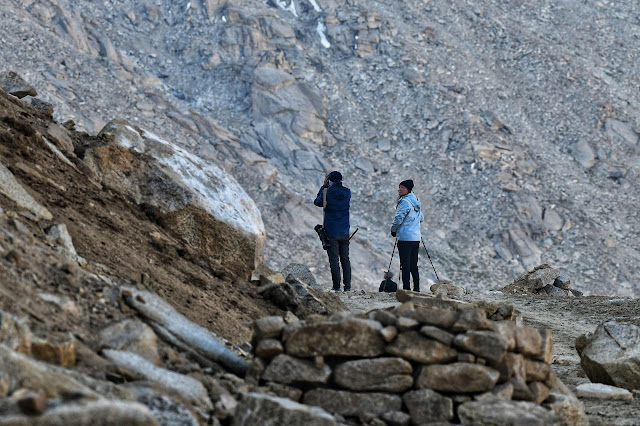









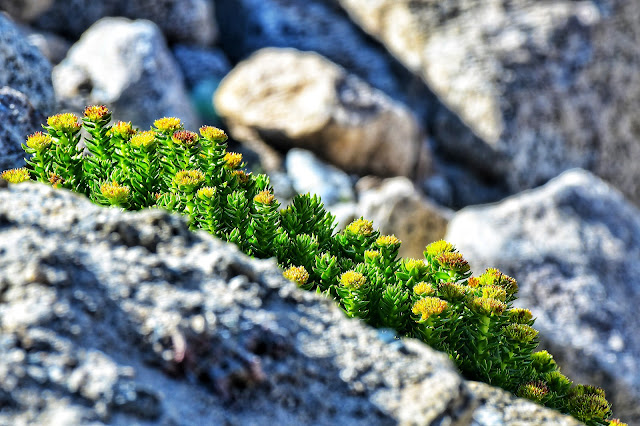













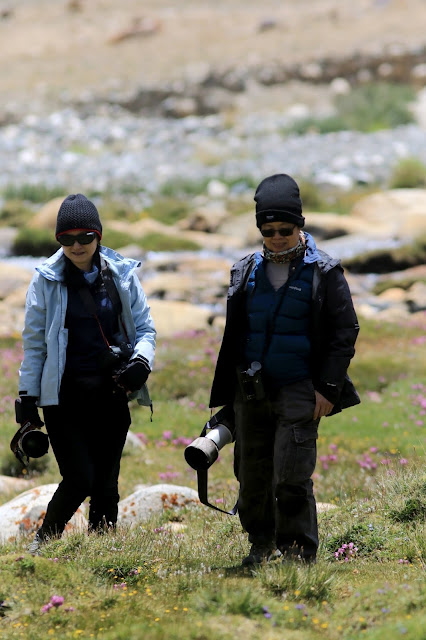





















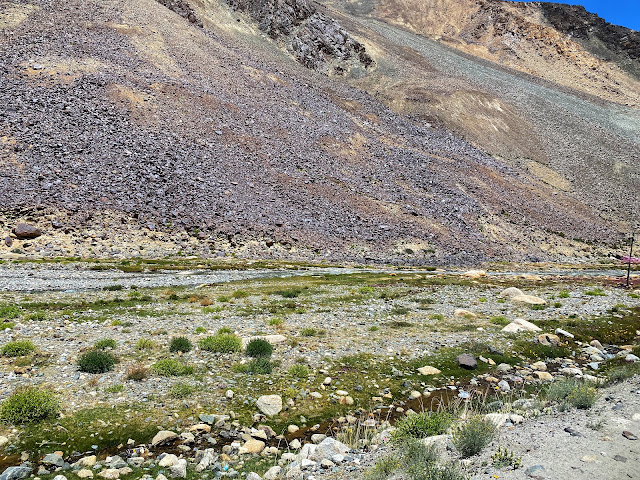




























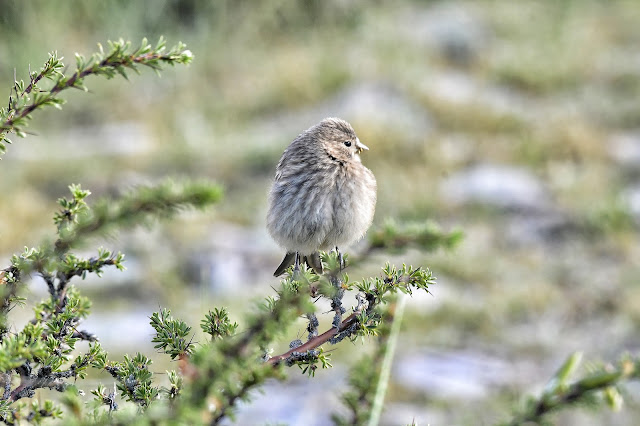










ไม่มีความคิดเห็น:
แสดงความคิดเห็น